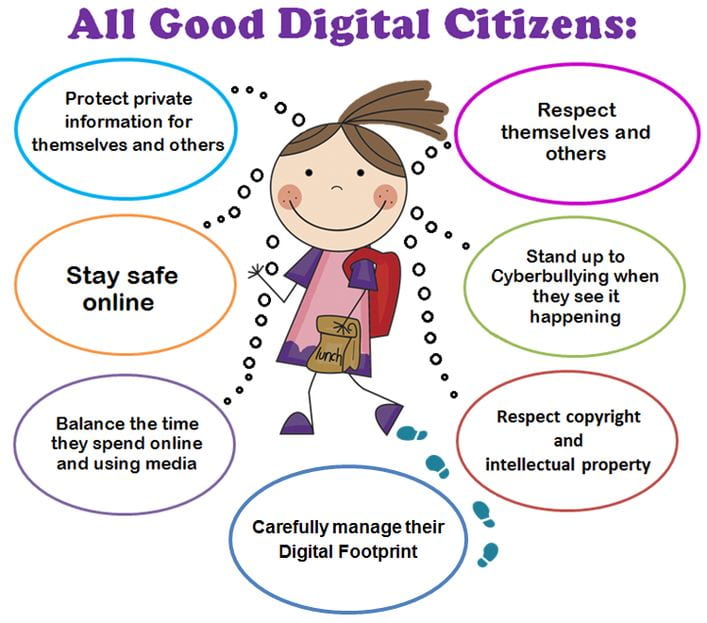Digital citizenship is defined as the norms of appropriate, responsible behavior with regard to technology use. By embracing technology and to explore its various forms, students have a responsibility to model proper digital etiquette in using technology. Navigating the web intelligently and making appropriate decisions when using technology is an example of a good digital citizen. We want our children and students to carefully navigate the web while adhering to protocols that are symbolic of good digital citizenship.

Some point to consider are the following:
- Internet Safety: The Internet is a great place to learn and develop rewarding relationships, however, to do so safely requires vigilance. The process of developing responsible digital citizenship starts by instructing students on staying safe through employing strategies such as distinguishing between inappropriate contact and positive connections.
- Privacy and Security: We should educate students on protecting their data and identity. These days much of our information, both casual and private, is online. Keeping that information private, as well as the correct way to secure that information and protecting yourself from scams and schemes is a must.
- Relationships and Communication: The beauty of the Internet is that it brings people closer together and fosters relationships between people from across the World. But at the same time, students should think critically about developing relationships with people online; explore the risks and responsibilities of carrying out romantic relationships in the digital world; and examine the different pressures teens face when growing up online.
- Cyberbullying is any kind of online behavior that makes people feel sad, scared, angry, or upset. Our students should know how to prevent it, and who to report it too. They should take an active role of an “upstander and build positive and supportive relationships online.
- Digital Footprint and Reputation, a.k.a. Digital Shadow, is permanent information that a student places on the web, normally through Social Media, and is both searchable and can be copied and used by others elsewhere. Our digital world is permanent, and with each post, students are building a digital footprint. By encouraging students to self-reflect before they self-reveal, they will consider how what they share online can impact themselves and others.
- [Digital] Self-image and Identity is concerned with how students represent themselves online, and the relationship between online and offline selves. Students should be encouraged to reflect on the role of digital media in their lives and examine the effects on their sense of self, their reputation, and their relationships.
